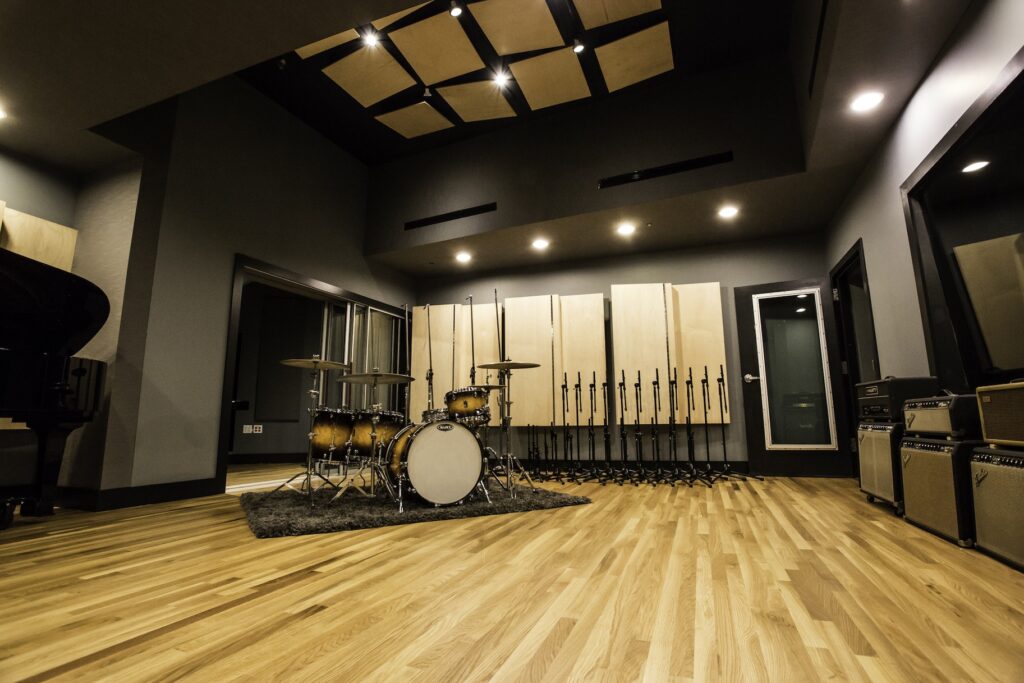Ozburn-Hessey has done a lot of work around Nashville, and this means that we’ve installed flooring in our share of recording studios. Whether you run a professional studio or a small project studio, it’s important to make the most of the sound quality within your recording environment. We may not be audio professionals, but our experience working with Nashville musicians and audio engineers has given us an appreciation of what quality materials can do for the quality of a recording room. Here are some examples of what we are talking about.
Options for Recording Studio Flooring
Acoustic Ceiling Tiles
Acoustic ceiling tiles are just one of the options that can be applied to ceilings, walls and recording studio floors to dampen sound or maximize one or more acoustic qualities. Acoustic ceiling tiles come in a variety of sizes and compositions. What you select will depend on the nature of your recording needs. In general, though, all acoustic ceiling tiles will make a room more “neutral”.
Hard surfaces like concrete walls reflect sound in chaotic ways. Different materials commonly used in household construction tend to make certain frequencies of sound very apparent in the perceived audio spectrum, while suppressing others. We won’t go off the deep end in describing this phenomena. It’s enough to emphasize that acoustic ceiling tiles and other audio-focused room materials are a way to create the best possible recording and listening environment.
Acoustic Flooring
Acoustic recording studio flooring is, perhaps, less of a challenge than materials meant for walls and ceilings. This is mostly the case because recording studio floors are so easy to cover with carpet and rugs, if they become too “loud”. On the other hand, untreated wood floors are a mainstay in many recording studios all around Nashville, and who are we to tell you that you should choose anything different?
Some people actually prefer the audio performance of untreated hardwood recording studio flooring, compared to the highly engineered materials used in some state of the art facilities. Depending on the wood you use, the grain pattern will have an interesting impact on the way sound reflects throughout the room in question. Being irregular, some sound engineers find that the natural audio diffusion resulting from hardwood flooring gives a “natural” sound not found in rooms designed for absolute control and predictability.
Hardwood is also softer than some other recording studio flooring options, meaning that it will be slightly more absorbent of sound than alternatives. This is one of the reasons it is so often used in audio environments. Hardwood allows for natural reverberation, without creating the aggressive slapback of concrete, marble, or other hard flooring materials.
At the end of the day, the flooring and ceiling materials you choose should be comfortable and inspiring. After all, these are rooms where you and your collaborators will be spending many hours. If the rooms aren’t beautiful and inspiring, you’ll find that it takes a toll on the music you are able to create. Create audio recording spaces that work for sound as well as for the aesthetic sensibilities of the people who use them. Ozburn-Hessey can help you find the right balance.

